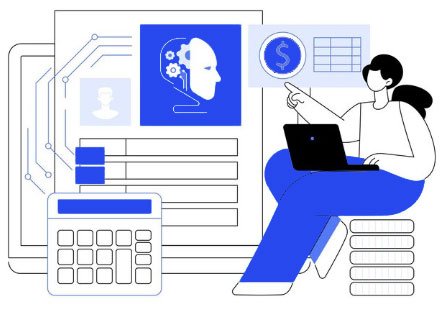CATEGORIES (115)
- AdSense (1)
- AI (9)
- AI SEO (13)
- ASP.Net Projects (1)
- Backlinks (1)
- Buy Sell Code (12)
- Chat GPT (3)
- Clone Website (1)
- Content Strategy (3)
- Crypto Platform (4)
- Digital Marketing (5)
- eBooks (1)
- Final Year Projects (3)
- Google Updates (4)
- Hosting (1)
- Keyword Strategy (4)
- Passive Income (7)
- PHP Scripts (17)
- PHP Tutorial (6)
- PPC (1)
- Readymade Software (3)
- Reselling Software (1)
- SaaS (1)
- SEO (25)
- Side Hustle (3)
- Social Media (2)
- Website (5)
- White Label Software (5)

AI vs Traditional SEO: The 3 Pillars You Need to Win in Search
SEO, AI SEO
AI SEO combines traditional search engine optimization with artificial intelligence to improve accuracy, speed, and adaptability. This article explores the three pillars of AI SEO, how it differs from traditional methods, and how businesses can fix common SEO issues using AI-driven strategies — complete with examples and practical tips.
Introduction
SEO is evolving at lightning speed. While traditional SEO relied on manual keyword research, link building, and content optimization, AI-powered SEO uses machine learning, predictive analytics, and automation to make these processes faster, more accurate, and more aligned with search engine algorithms like Google’s AI-driven ranking systems (RankBrain, BERT, MUM, and Search Generative Experience).
The future of search visibility is no longer just about keywords — it’s about understanding user intent, content context, and dynamic optimization.
Let’s break it down into the three pillars of AI SEO.
The 3 Pillars of AI SEO Strategy
1. AI-Driven Keyword & Topic Research
- Traditional SEO: Manual keyword research using tools like Google Keyword Planner, often focusing on exact-match phrases.
- AI SEO: Predicts future search trends, analyzes user intent, and clusters semantically related topics using NLP (Natural Language Processing).
Example Fix:
Instead of targeting “best running shoes,” AI tools suggest targeting topic clusters like running shoe reviews, foot health, and marathon training to build topical authority.
2. AI Content Optimization & Personalization
- Traditional SEO: Manual content updates based on fixed guidelines.
- AI SEO: Uses AI writers, intent analysis, and personalization engines to adapt content for different audiences automatically.
Example Fix:
An AI SEO tool might detect that a blog post gets high traffic but low conversions. It automatically rewrites headlines, adjusts CTAs, or recommends adding product comparisons for better engagement.
3. AI-Powered Technical SEO & Automation
- Traditional SEO: Manual site audits and technical fixes done periodically.
- AI SEO: Constantly scans and auto-fixes broken links, improves Core Web Vitals, and adjusts for Google’s latest updates in real-time.
Example Fix:
AI detects a slow-loading page due to large images and automatically compresses them without losing quality.
Traditional SEO vs AI SEO — How to Fix Issues
Aspect | Traditional SEO Approach | AI SEO Approach | How to Fix with AI (Example) |
|---|---|---|---|
Keyword Research | Manual keyword entry | Predictive & semantic search | Use AI to find related questions and long-tail topics |
Content Creation | Static blog updates | Dynamic, intent-based optimization | AI rewrites headlines to match trending search queries |
On-Page Optimization | Manual meta tags, titles | Auto-optimized meta & schema | AI applies schema markup for featured snippets |
Link Building | Manual outreach | Predictive link-building opportunities | AI suggests backlink prospects based on niche authority |
Technical SEO | Periodic audits | Continuous monitoring & auto-fixes | AI fixes broken links and optimizes speed in real time |
FAQs About AI SEO Strategy
1. What is AI SEO?
AI SEO uses artificial intelligence to automate, enhance, and predict SEO actions for better search rankings.
2. Does AI replace traditional SEO?
No. AI improves traditional SEO by adding automation, predictive insights, and real-time adaptability.
3. Which AI tools can help with SEO?
Examples include SurferSEO, MarketMuse, Clearscope, Jasper AI, and Frase.
4. Can AI SEO guarantee top rankings?
No ethical SEO strategy can guarantee #1 rankings, but AI can significantly improve your chances by making data-driven optimizations.
5. Is AI SEO more expensive?
Not necessarily. While AI tools may have subscription costs, they often save money by reducing manual labor and speeding up results.
Final Thoughts
AI-powered SEO is the future of online visibility, bringing speed, precision, and adaptability beyond traditional methods.
Focus on the three pillars — AI-driven keyword research, content personalization, and technical automation — to secure long-term success.
Coderobotics can help you implement these strategies, from smart keywords to automated fixes, keeping your site competitive in the AI-driven era.
This entry was posted by Sasi and tagged in The 3 Pillars of AI SEO Strategy
Leave a Comment
Comments
No comments yet. Be the first to comment!